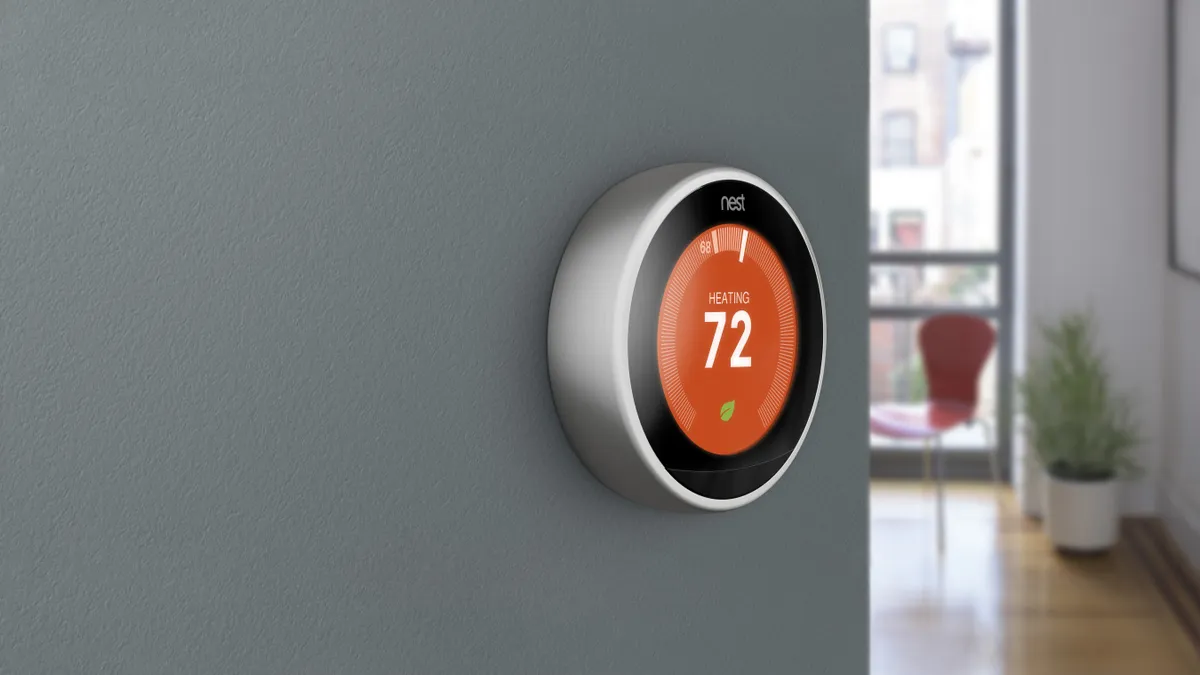Dive Brief:
- There are roughly 52 million smart meters installed in the United States, and almost 90% of them are in residences, according to the U.S. Energy Information Administration (EIA). Despite that, data in many states remains difficult to access, with a new report claiming that significant efficiency savings would be unlocked if customers could view their own information, Greentech Media reports.
- Two groups, Mission:Data and More Than Smart, are calling for state regulators to allow customers access to their energy usage data, and to allow customers to pass the data along to third-party service providers. Doing so, they say, could unlock billions in efficiency savings.
- More than a dozen research papers have examined the impacts of customer access to energy usage data, finding efficiency savings ranging from 4% to 18% when the data is easily available.
Dive Insight:
Last month, Mission:Data, an industry group, and More Than Smart, a nonprofit that aims to enable DER integration on the grid, released a report calling for three changes to states' energy policies, designed to expand energy efficiency and unlock the value in distributed energy resources relying on smart meters:
- Commissions should require utilities to provide the best available energy usage data to customers and their authorized third parties, in a standardized, electronic format as part of basic utility service;
- Tariffs should be published in standardized, machine-readable forms so that software applications can quickly and accurately calculate expected costs;
- Customer bills should also be available to customers (and authorized third parties) in standardized, electronic format.
Greentech Media reports that Michael Murray, More Than Smart’s chief technology strategist and an author of the report, said that while California and New York have made strides in providing data access, most states are lagging. “Obviously, the digital side of grid modernization is as critical as the physical side of things,” he said.
According to the report, buildings and homes in the United States account for 69% of the country's power use and 39% of carbon emissions. And yet value in advanced metering data remains unlocked because it is often difficult for the consumer to access.
"The costs of the lack of data access are significant — in the tens of millions of dollars in one sector alone. These costs make energy efficiency unnecessarily expensive, hindering the efforts of entrepreneurs and innovators to develop and deploy climate solutions," the report found.
In California, Pacific Gas and Electric (PG&E) is developing a pilot program that would use AMI data to precisely measure and pay for the impacts of efficiency. Working with Natural Resources Defense Council and The Utility Reform Network, PG&E is using the open-source CalTRACK/Open EE meter and measurement system to develop a two-year pilot that would engage with third-party aggregators of energy efficiency products, paying for actual results rather than using up-front rebates tied to expected savings.
In New York, the state's Reforming the Energy Vision has made AMI data a priority. And Greentech reports Illinois has passed a law mandating utility data sharing with customers.
Editor's note: A previous version of this article said that homes in the United States account for 69% of the country's power use and 39% of carbon emissions. That is incorrect. All buildings in the United States, not just homes, account for 69% of the country's power use and 39% of carbon emissions.














